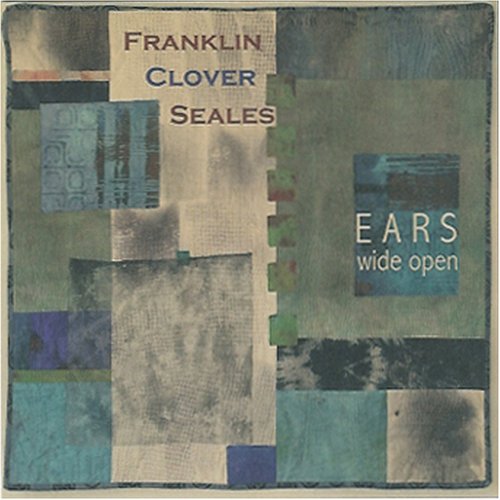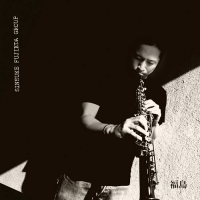Home » Jazz Articles » Multiple Reviews » World Music: Ellington and Barbieri
World Music: Ellington and Barbieri
 Bolivia/Under Fire
Bolivia/Under Fire Gato Barbieri
1971/1973
Gato Barbieri announced his arrival on a couple of Don Cherry albums with a piercing tone and a seemingly reckless, avant-garde leaning. Later he would strike gold with the passionate soundtrack to “Last Tango in Paris”, a much more restrained affair that showcased the tenor saxophonist’s melodic side. The two albums featured on this reissue, Bolivia and Under Fire, combined the two approaches, a prime example of the years when jazz musicians were still influenced by Bitches Brew yet had not given themselves over completely to fusion.
During a time when jazz was struggling to find an identity, Barbieri unleashed an approach that wed the music from his native Argentina to a jazz sensibility, winning an audience overseas, but was largely ignored in the States, a country enamored with rock and roll. The fusion of world music with jazz had been attempted before (by Cherry, no less), yet Barbieri’s albums seems much more unified in vision, less explorations than complete concepts. The swirling chords and Latin beats are quite accessible, and Barbieri found excellent accompaniment in the dancing bass of Stanley Clarke and the glistening keyboards of Lonnie Smith. The strong rhythmic backbeat - the strongest link to Latin America – comes courtesy of Airto Moreira and James M’tume, among others. Most of these artists would go on to fame as leaders of the fusion era, and one can see hints of Weather Report over the horizon. Yet Barbieri wins the day with his passionate improvising. He doesn’t seem to play his horn as much as crawl inside and pour his emotions out, and he achieved a halfway point between straightforward improvisation and free jazz that hadn’t been seen since Jackie McLean’s heyday. Parts of this record will sound too abrasive – the vocals will be a little much for some ears – but Barbieri’s explorations early in his career prove too beguiling too ignore.
 The Far East Suite
The Far East Suite
Duke Ellington
1966
In 1963 Ellington and his orchestra were whisked away on a whirlwind tour of the Mideast and India, sponsored by the State Department and President Kennedy to promote diplomacy. After receiving the necessary inoculations they toured Syria, Jordan, Iran, and Iraq, playing for dignitaries and soaking up the culture along the way. One can only wonder what would happen were Ellington alive today to undertake such a project.
Always actively searching for new inspiration, Ellington and Strayhorn were hoping to write some new music inspired by the local performers. The result was the Far East Suite, an extraordinary piece of work and one of the most consistently satisfying projects Ellington and Strayhorn ever did together. The scales and tones of Eastern music are woven into the patchwork of improvisation, yet it all manages to sound like Ellington and, as you might expect, swing tremendously.
In truth, the time was right for a project like this. Big bands were losing their popularity, and the door was wide open for bandleaders to do something besides provide music for dancing. Ellington had always preferred to think of himself of a composer rather than a jazz musician, composing tone poems and extended suites as far back as the thirties, and The Far East Suite is clearly in line with that approach, a sensibility more akin to Tchaikovsky than “It Don’t Mean A Thing”. From the opener “Tourist Point of View” to the extended “Ad Lib On Nippon”, we get Ellington at his most passionate and lyrical, prodding the excellent sidemen still in his company to some dazzling solo work, yet also unafraid to wander into more abstract riffing on “Depk”. Ellington himself is in fine form, sentimental and forceful when the need arises. But what sets The Far East Suite apart from other Ellington projects is how the various parts come together into a unified whole, like the main courses and side dishes of an excellent meal. There is harshness juxtaposed with beauty throughout, and one senses that Ellington was trying to capture something of the landscape and the people he had visited in the structure of the song cycle.
Shortly after The Far East Suite Strayhorn died, a loss from which Ellington never fully recovered. This is one of the pair’s last great works, a stunning sequence of songs that proved that even after jazz orchestras were no longer fashionable, Ellington continued to come up with relevant work. One of the most satisfying reissues of the year.
Gato Barbieri-Bolivia/Under Fire
Tracks: Bolivia: 1. Merceditas 2. Eclypse/Michellina 3. Bolivia 4. Ninos 5. Vidala Triste. Under Fire: 6. El Parana 7. Yo Le Canto a la Luna 8. Antonico 9. Maria Domingas 10 El Sertao.
Personnel: Gato Barbieri-tenor saxophone, flute, vocal; Lonnie Liston Smith-piano; John Abercrombie-guitar; Stanley Clarke-bass; Jean-Francois Jenny-Clark-bass; Airto Moriera-drums, percussion; Pretty Purdie-drums; Roy Haynes-drums; James M’tume-congas; Gene Golden-congas; Moulay Ali Hafid-dumbeg.
Duke Ellington-The Far East Suite
Tracks: 1. Tourist Point Of View 2. Bluebird Of Delhi 3. Isfahan 4. Depk 5. Mount Harissa 6. Blue Pepper 7. Agra 8. Amad 9. Ad Lib On Nippon 10. Tourist Point Of View (Alternate) 11. Bluebird Of Delhi (Alternate) 12. Isfahan (Alternate) 13. Amad (Alternate).
Personnel: Duke Ellington-piano; Harry Carney, Russell Procope, Johnny Hodges, Jimmy Hamilton, Paul Gonsalves-reeds; Lawrence Brown, Buster Cooper, Chuck Conners-trombones; Cottie Williams, William “Cat” Anderson, Mercer Ellington, Herbie Jones-trumptes; John Lamb-bass; Rufus Jones-drums.
Verve on the web: http://www.bluebirdjazz.com
Tags
PREVIOUS / NEXT
Support All About Jazz
 All About Jazz has been a pillar of jazz since 1995, championing it as an art form and, more importantly, supporting the musicians who make it. Our enduring commitment has made "AAJ" one of the most culturally important websites of its kind, read by hundreds of thousands of fans, musicians and industry figures every month.
All About Jazz has been a pillar of jazz since 1995, championing it as an art form and, more importantly, supporting the musicians who make it. Our enduring commitment has made "AAJ" one of the most culturally important websites of its kind, read by hundreds of thousands of fans, musicians and industry figures every month.

















